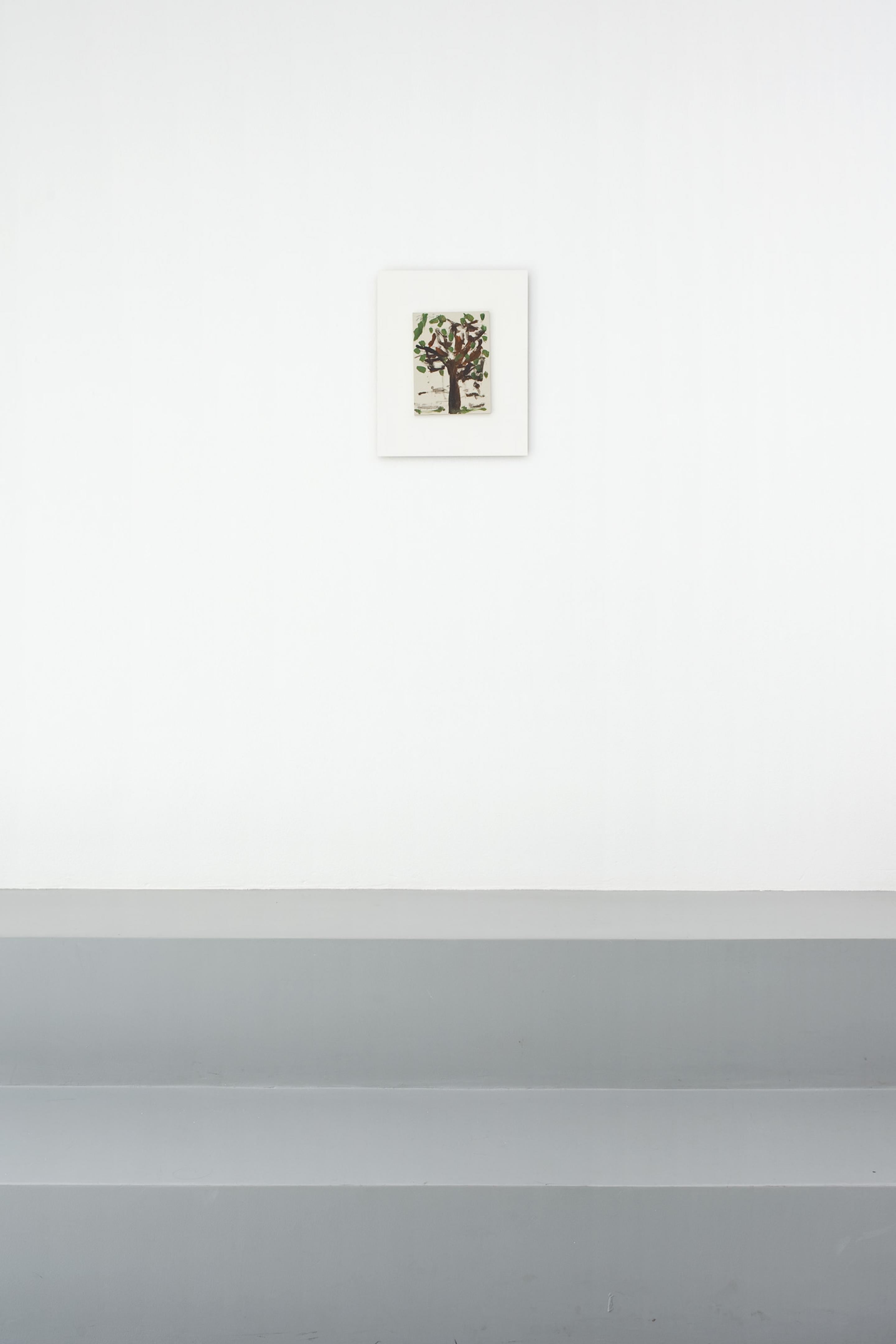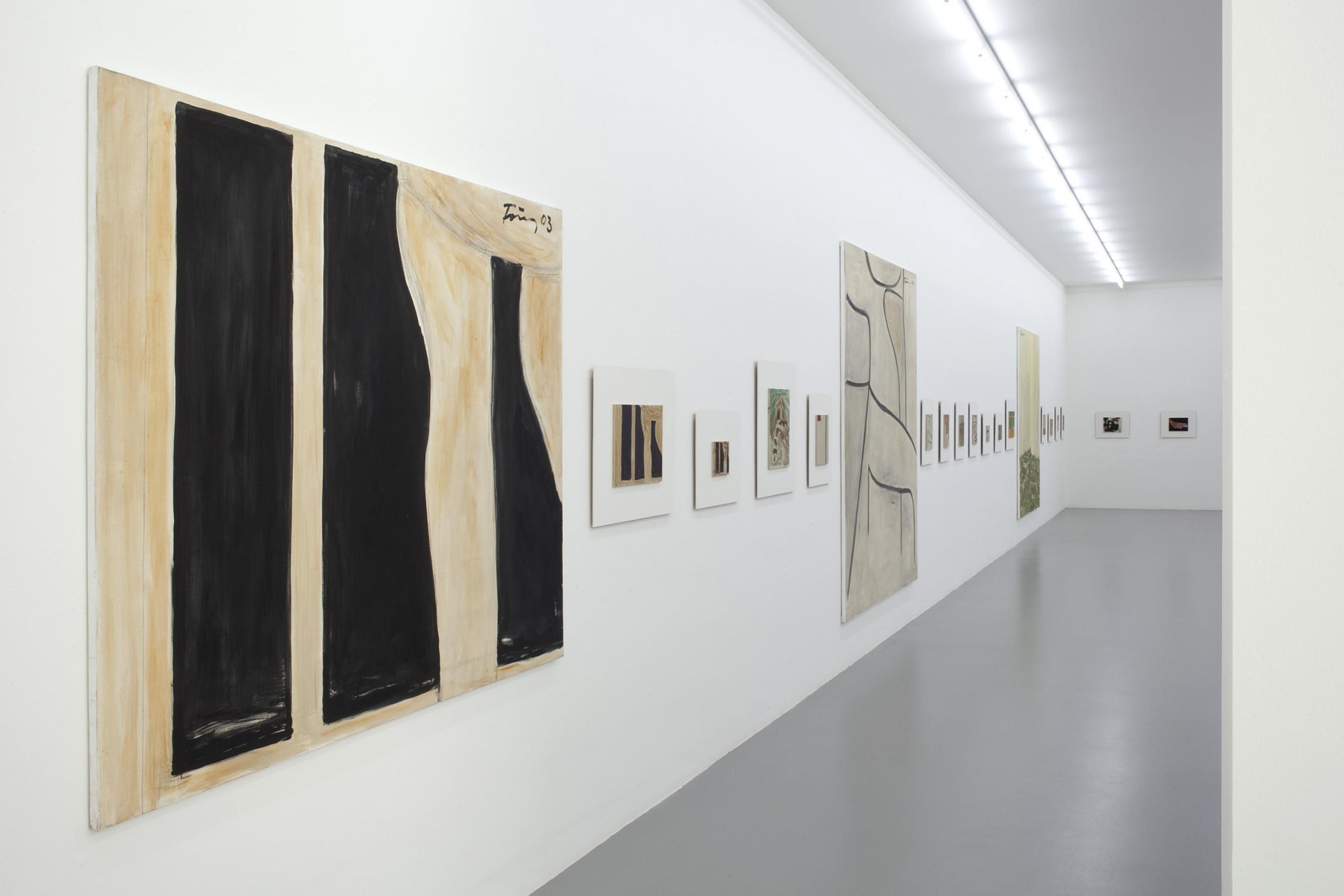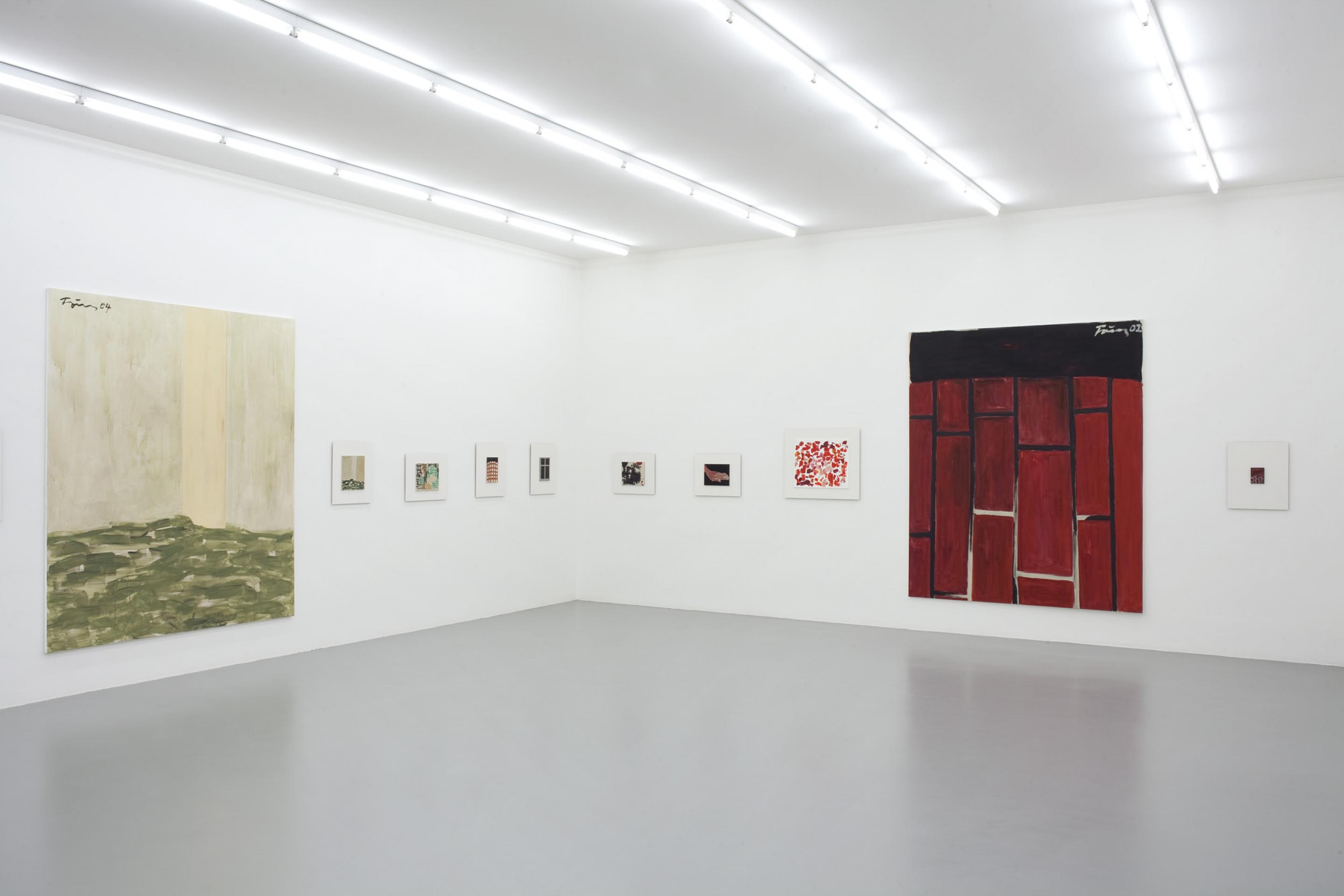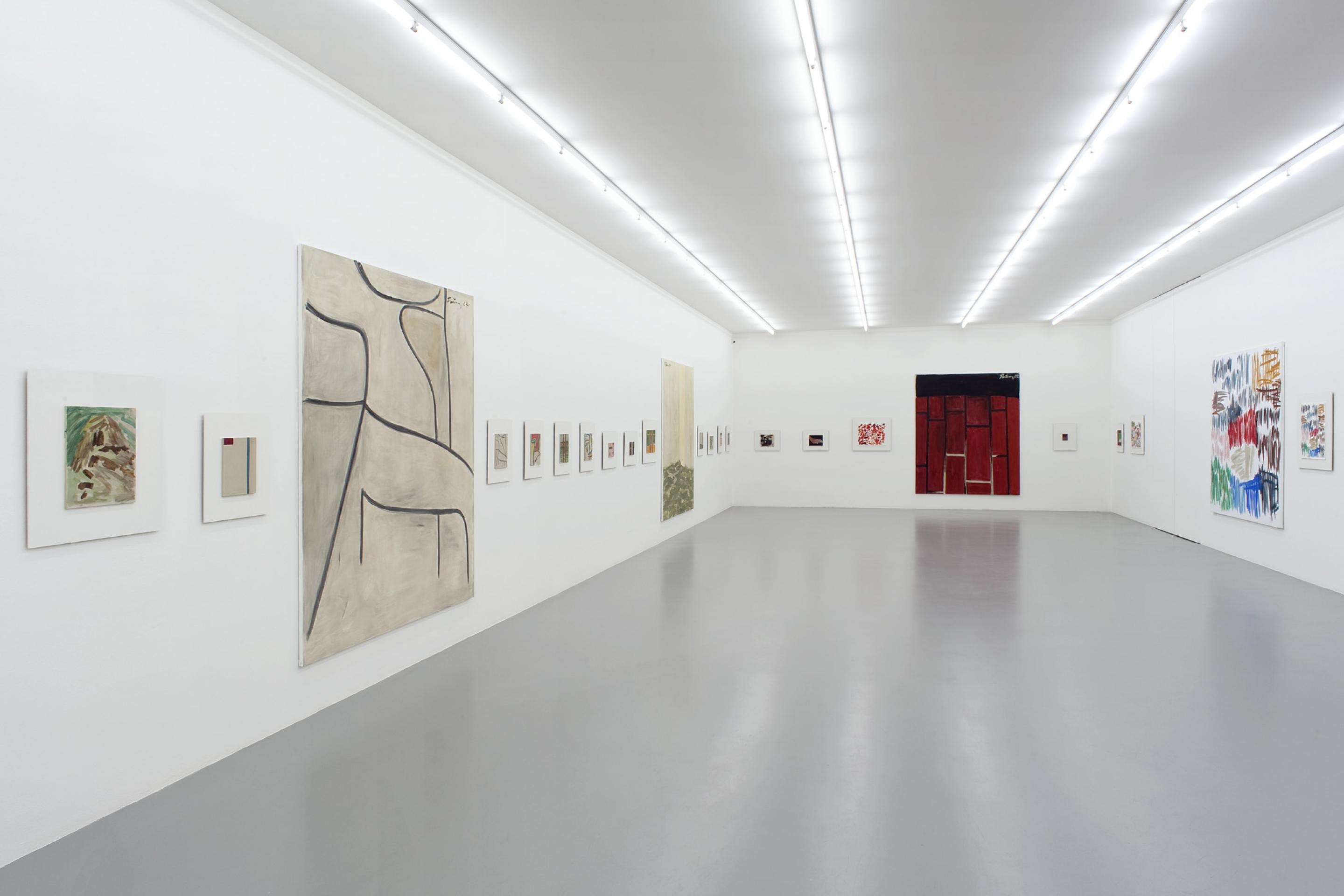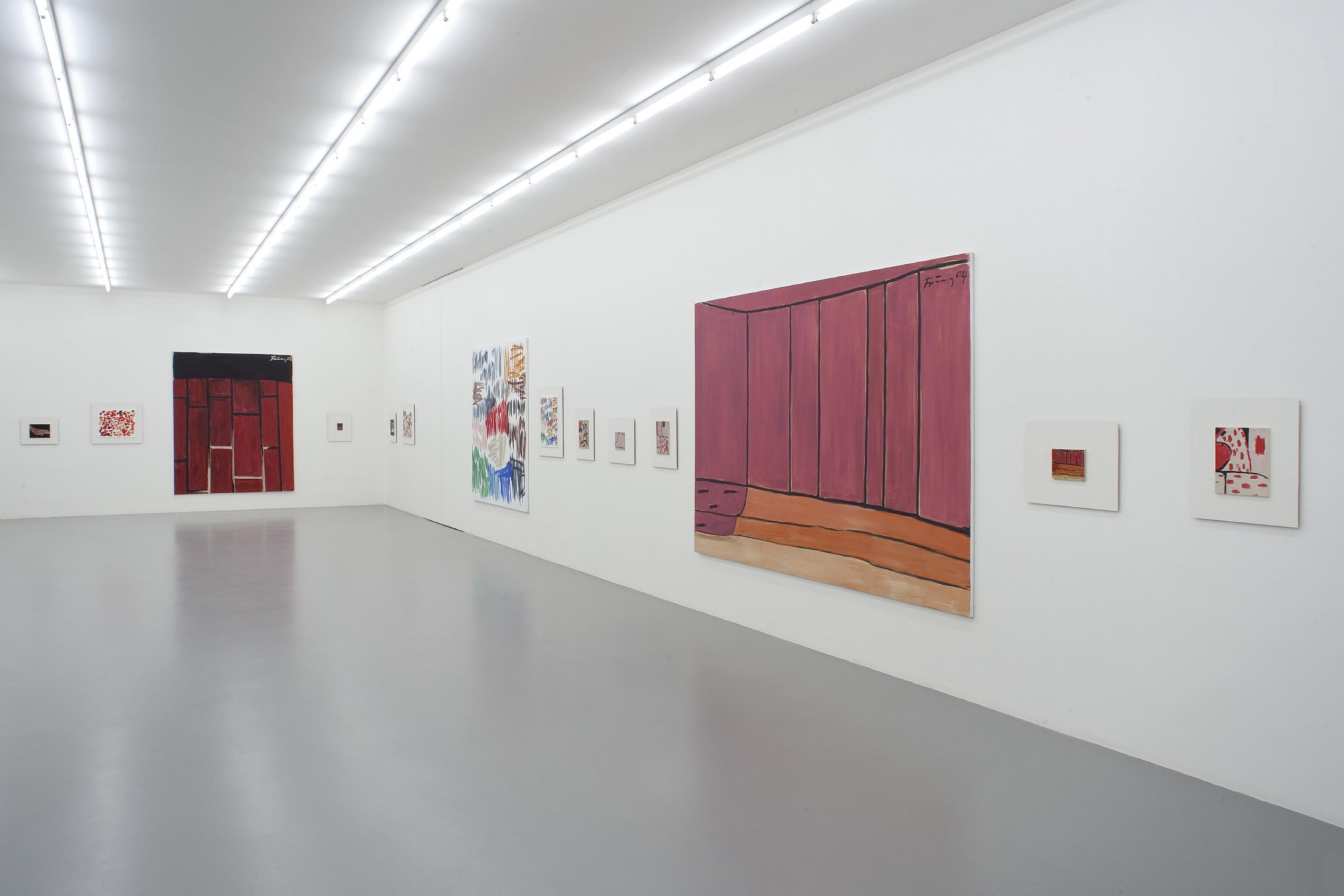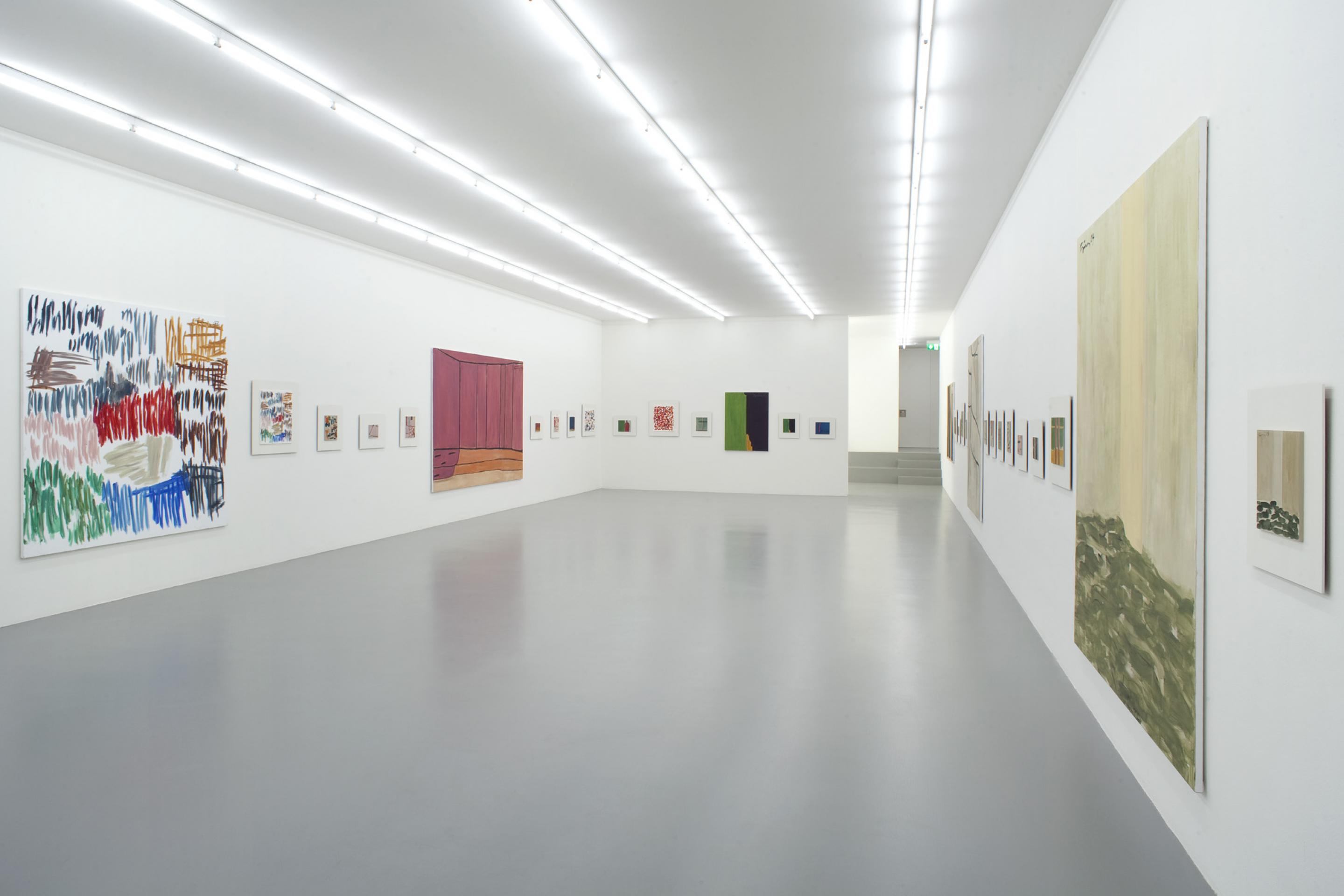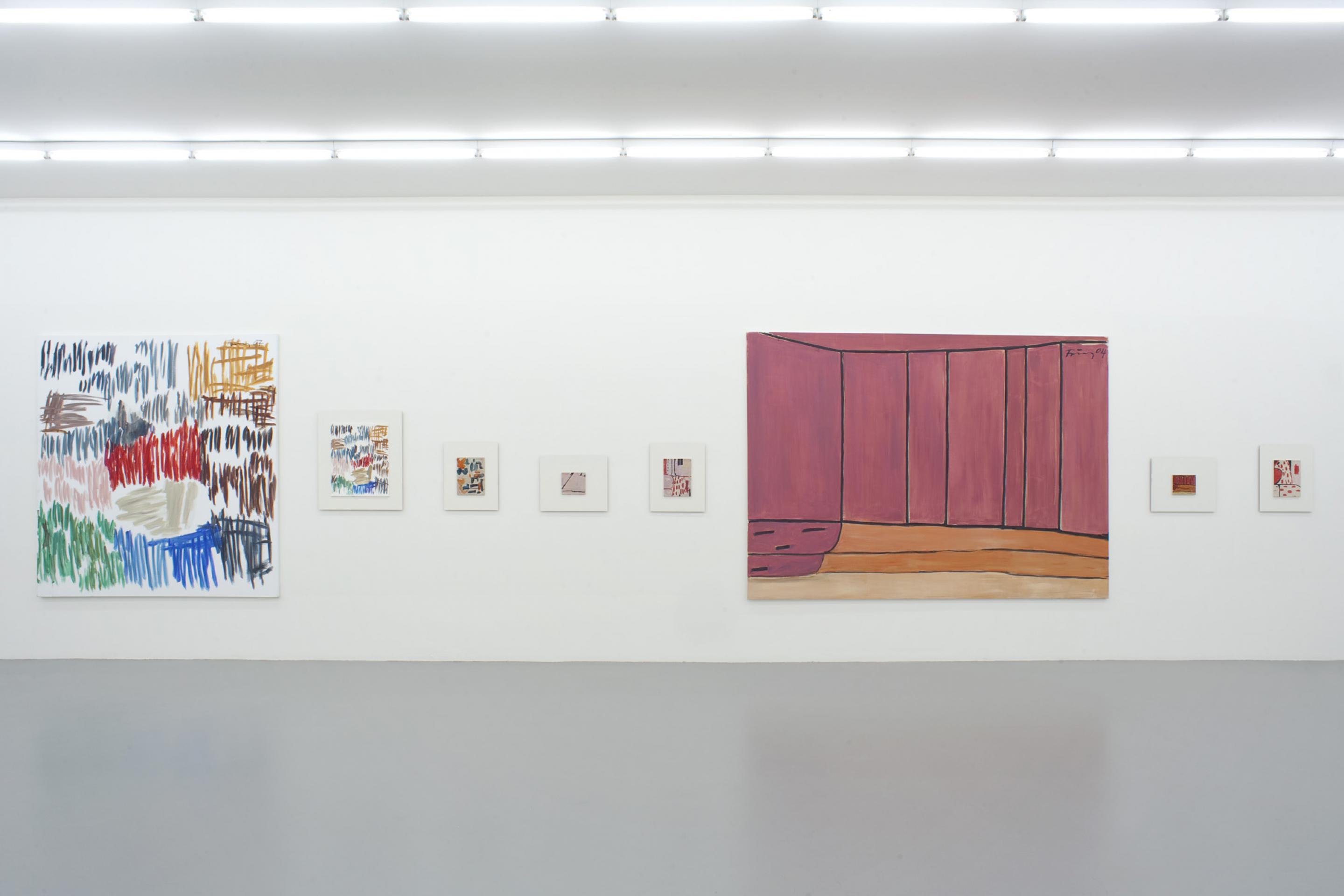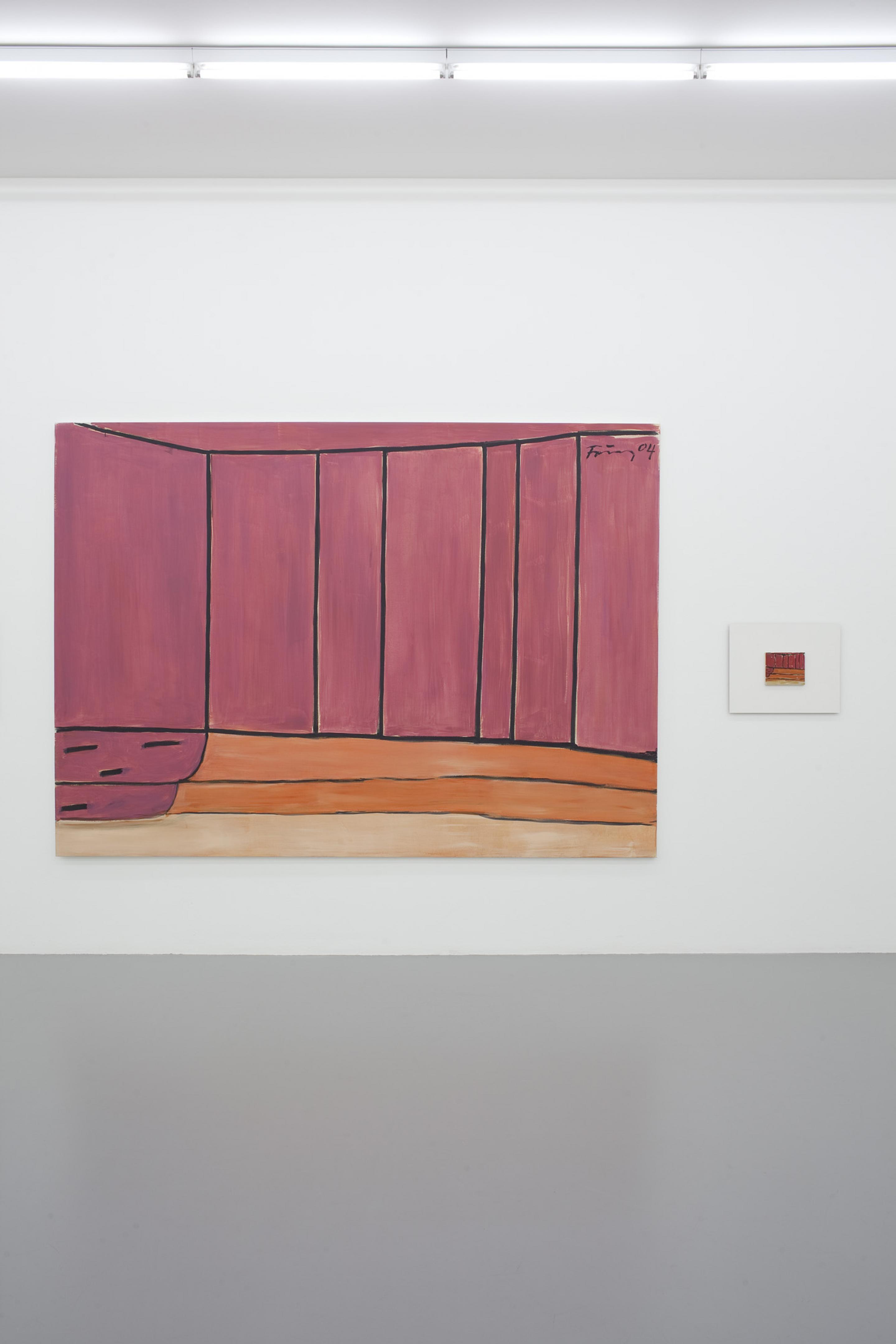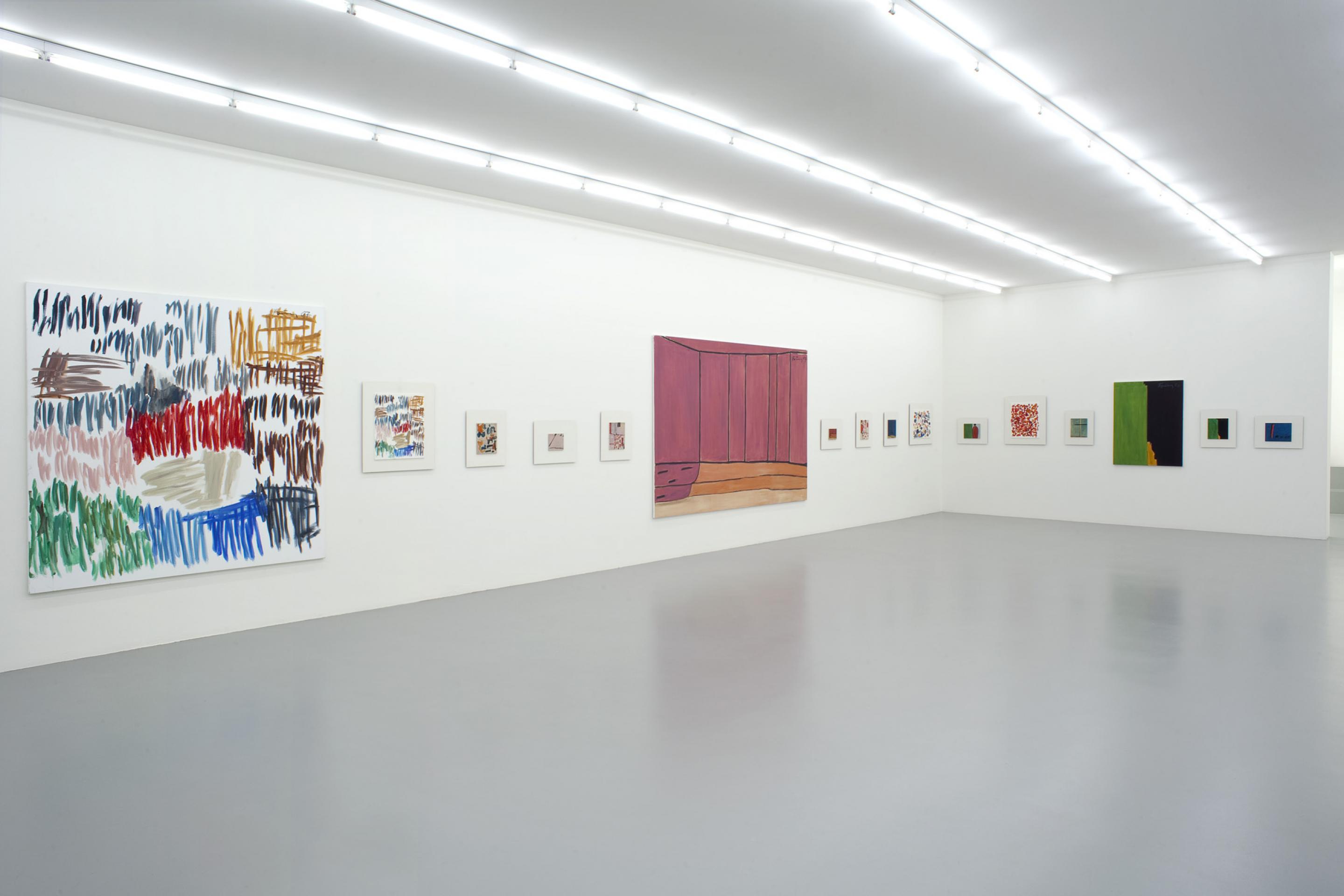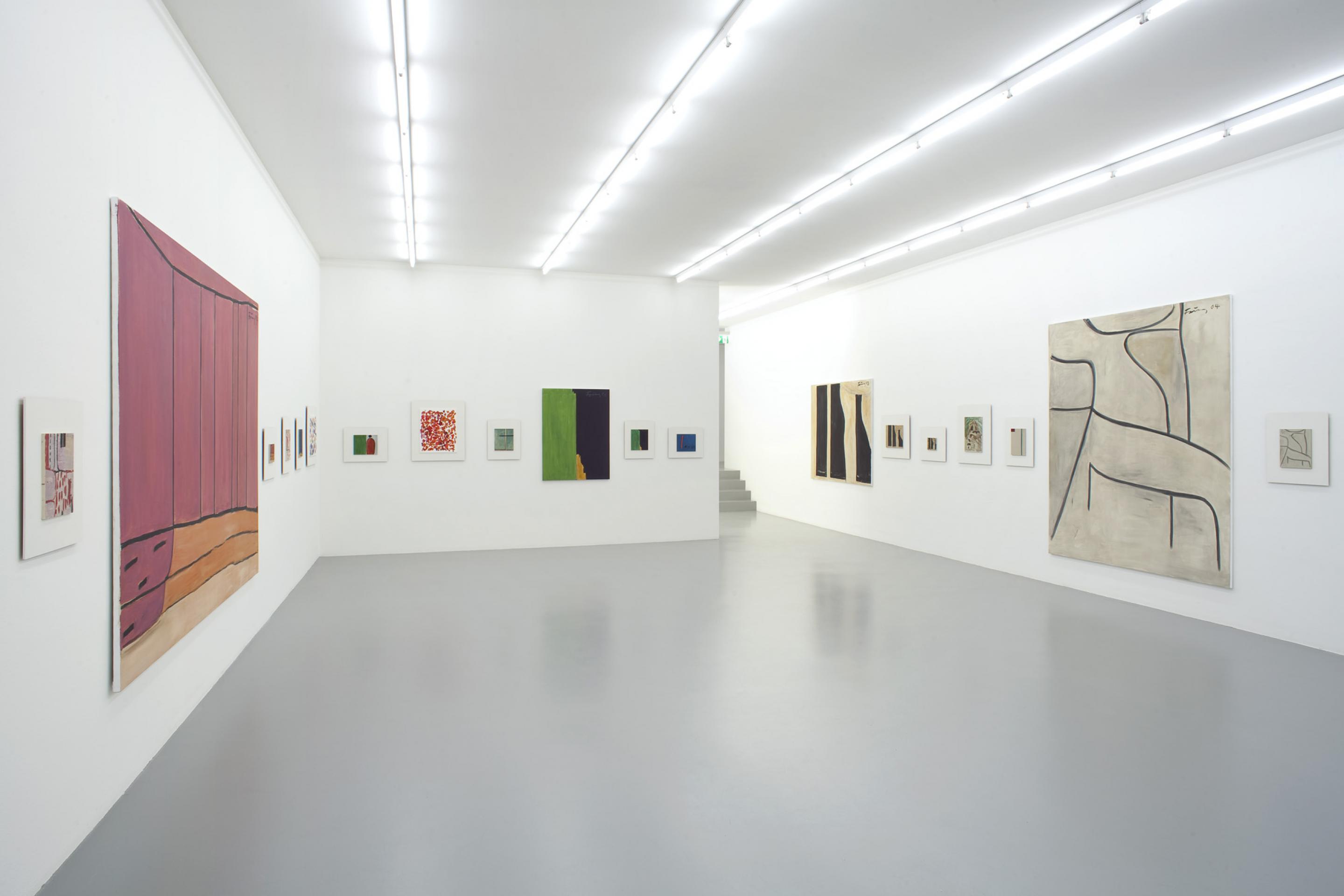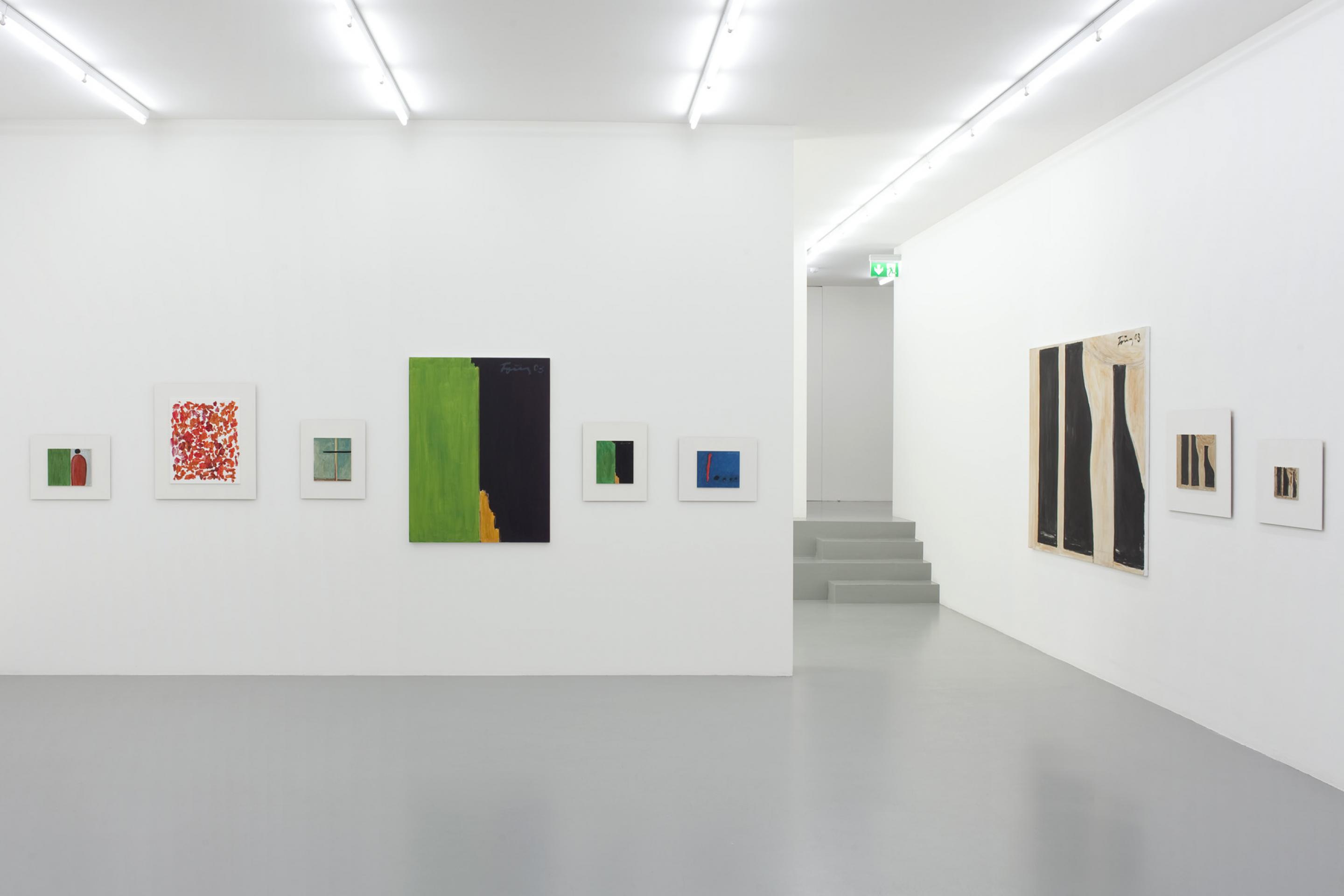GüntherFöRG
Le coppie si passano la palla
Gió Marconi, Milan
06.04.–25.05.2016
Le coppie si passano la palla
Gió Marconi, Milan
06.04.–25.05.2016
IT
Günther Förg
Le coppie si passano la palla
Inaugurazione: mercoledì 6 aprile 2016 dalle 18 alle 21
7 aprile - 25 maggio 2016
martedì - sabato; 11-19
Giò Marconi ha il piacere di annunciare “Le coppie si passano la palla” – seconda mostra personale di Günther Förg in galleria.
Celebre figura della scena artistica degli anni Ottanta, Günther Förg è stato un componente chiave dell’influente generazione di artisti tedeschi che include Martin Kippenberger, Albert Oehlen e Georg Herold. La pratica multidisciplinare di Förg enfatizza il dialogo tra diversi media: pittura, fotografia, architettura, scultura. Sempre interessato all’indagine critica del Modernismo e alla sua eredità, Förg ha sfidato le convenzioni artistiche, attribuendo lo stesso valore alla cornice, alla superficie dipinta e allo spazio aldilà di questa.
L’idea guida di questa mostra - “Le coppie si passano la palla”- è la giustapposizione di grandi dipinti ad acrilico alle loro identiche controparti su legno di dimensioni più piccole.
In mostra in galleria una selezione di questi grandi - e piccoli - lavori in parte derivanti dalle serie iconiche di Günther Förg come quelle dei dipinti-finestra, delle griglie colorate e dei dipinti a punti.
Un cospicuo gruppo di piccoli lavori su legno è esposto autonomamente, senza l’accostamento ai doppi più grandi. Questo corpo di lavori va da opere puramente astratte a dipinti semi astratti che suggeriscono paesaggi e montagne in lontananza, fino alle rare inequivocabili rappresentazioni figurative di una mano o di un albero verdeggiante.
Tra il 2003 e il 2007 Günther Förg ha realizzato diverse centinaia di piccoli dipinti su legno.
Queste opere non nascono come lavori autonomi, sono piuttosto riproduzioni di acrilici su tela di maggiori dimensioni, precedentemente realizzati dall’artista. Si dà sempre per scontato che l’artista inizi il proprio lavoro dal piccolo sketch – un acquerello o un disegno – per poi arrivare al grande dipinto. Förg invece fa esattamente l’opposto. Per prima è sempre l’opera di dimensioni maggiori.
I piccoli formati sono ulteriori riflessioni e conseguenze delle opere più grandi: ciò che era appena stato completato su larga scala viene poco dopo riprodotto in un formato più piccolo.
Nel 1996 lo storico dell’arte Max Wechsler ha riassunto esaustivamente questo approccio in un saggio sull’artista: “Tutto sembra più o meno chiaramente derivare da altro, tutto sembra affermare che il lavoro artistico dovrebbe essere fondamentalmente inteso come una continua reazione e commento ai lavori esistenti – incluso naturalmente se stesso”.*
Attraverso la riproduzione di più di 400 dei suoi lavori di diversi periodi Günther Förg stava realizzando dipinti sui dipinti stessi, preparando così una retrospettiva su una scala mini.
* Max Wechsler, ‘Ein komplexes Schau-spiel, inszeniert auch im Detail: Zur Kunst von Günther Förg’ (A Complex Spactacle, Staged with Careful Attention to Detail: An Essay on the Art of Günther Förg), in Günther Förg, exh. cat, (Hannover: Kunstverein Hannover, 1996).
Günther Förg nasce nel 1952 a Füssen e muore nel 2013 a Friburgo. È stato professore all’Università di Arte e Design di Karlsruhe e in seguito all’Accademia di Belle Arti di Monaco.
Mostre personali selezionate: Deichtorhallen, Amburgo (2015); Museum Brandhorst, Monaco (2014); Fondation Beyeler, Basilea (2009); Langen Foundation, Neuss (2007); Kunstmuseum Basilea (2006); Gemeentemuseum, The Hague (2003, 2006); Tel Aviv Museum of Art (2002); Kunsthaus Bregenz (2001); Stedelijk Museum, Amsterdam (1995); Museo Nacional Centro de Arte Reina Sofía / Palacio de Velázquez, Madrid (1998); Touko Museum of Contemporary Art, Tokyo; Musée d'Art Moderne de la Ville de Paris, Parigi (1991); Museum Fridericianum, Kassel; Secession, Vienna (1990); Newport Harbour Art Museum, Newport Beach (1989); The Renaissance Society, Chicago (1988). Il lavoro di Günther Förg è stato presentato nell’ambito di diverse mostre collettive inclusi musei e gallerie di arte contemporanea, tra cui: 1980–Now, Museum of Modern Art, New York (2011); Flashback - eine Revision der Kunst der 80er Jahre, Kunstmuseum Basel, Basilea (2005); Sammlung Speck, Museum Ludwig, Colonia (1996); documenta IX, Kassel (1992); and Carnegie International, Carnegie Museum of Art, Pittsburgh (1988).
Le opere di Günther Förg sono presenti nelle maggiori collezioni, tra cui Neue Nationalgalerie, Berlino; Museum of Modern Art (MoMA), New York; Stedelijk Museum, Amsterdam; Museo Nacional Centro de Arte Reina Sofía, Madrid; Städel Museum, Francoforte; Musée national d’art moderne - Centre Pompidou, Parigi; Tate Britain, Londra.
Le coppie si passano la palla
Inaugurazione: mercoledì 6 aprile 2016 dalle 18 alle 21
7 aprile - 25 maggio 2016
martedì - sabato; 11-19
Giò Marconi ha il piacere di annunciare “Le coppie si passano la palla” – seconda mostra personale di Günther Förg in galleria.
Celebre figura della scena artistica degli anni Ottanta, Günther Förg è stato un componente chiave dell’influente generazione di artisti tedeschi che include Martin Kippenberger, Albert Oehlen e Georg Herold. La pratica multidisciplinare di Förg enfatizza il dialogo tra diversi media: pittura, fotografia, architettura, scultura. Sempre interessato all’indagine critica del Modernismo e alla sua eredità, Förg ha sfidato le convenzioni artistiche, attribuendo lo stesso valore alla cornice, alla superficie dipinta e allo spazio aldilà di questa.
L’idea guida di questa mostra - “Le coppie si passano la palla”- è la giustapposizione di grandi dipinti ad acrilico alle loro identiche controparti su legno di dimensioni più piccole.
In mostra in galleria una selezione di questi grandi - e piccoli - lavori in parte derivanti dalle serie iconiche di Günther Förg come quelle dei dipinti-finestra, delle griglie colorate e dei dipinti a punti.
Un cospicuo gruppo di piccoli lavori su legno è esposto autonomamente, senza l’accostamento ai doppi più grandi. Questo corpo di lavori va da opere puramente astratte a dipinti semi astratti che suggeriscono paesaggi e montagne in lontananza, fino alle rare inequivocabili rappresentazioni figurative di una mano o di un albero verdeggiante.
Tra il 2003 e il 2007 Günther Förg ha realizzato diverse centinaia di piccoli dipinti su legno.
Queste opere non nascono come lavori autonomi, sono piuttosto riproduzioni di acrilici su tela di maggiori dimensioni, precedentemente realizzati dall’artista. Si dà sempre per scontato che l’artista inizi il proprio lavoro dal piccolo sketch – un acquerello o un disegno – per poi arrivare al grande dipinto. Förg invece fa esattamente l’opposto. Per prima è sempre l’opera di dimensioni maggiori.
I piccoli formati sono ulteriori riflessioni e conseguenze delle opere più grandi: ciò che era appena stato completato su larga scala viene poco dopo riprodotto in un formato più piccolo.
Nel 1996 lo storico dell’arte Max Wechsler ha riassunto esaustivamente questo approccio in un saggio sull’artista: “Tutto sembra più o meno chiaramente derivare da altro, tutto sembra affermare che il lavoro artistico dovrebbe essere fondamentalmente inteso come una continua reazione e commento ai lavori esistenti – incluso naturalmente se stesso”.*
Attraverso la riproduzione di più di 400 dei suoi lavori di diversi periodi Günther Förg stava realizzando dipinti sui dipinti stessi, preparando così una retrospettiva su una scala mini.
* Max Wechsler, ‘Ein komplexes Schau-spiel, inszeniert auch im Detail: Zur Kunst von Günther Förg’ (A Complex Spactacle, Staged with Careful Attention to Detail: An Essay on the Art of Günther Förg), in Günther Förg, exh. cat, (Hannover: Kunstverein Hannover, 1996).
Günther Förg nasce nel 1952 a Füssen e muore nel 2013 a Friburgo. È stato professore all’Università di Arte e Design di Karlsruhe e in seguito all’Accademia di Belle Arti di Monaco.
Mostre personali selezionate: Deichtorhallen, Amburgo (2015); Museum Brandhorst, Monaco (2014); Fondation Beyeler, Basilea (2009); Langen Foundation, Neuss (2007); Kunstmuseum Basilea (2006); Gemeentemuseum, The Hague (2003, 2006); Tel Aviv Museum of Art (2002); Kunsthaus Bregenz (2001); Stedelijk Museum, Amsterdam (1995); Museo Nacional Centro de Arte Reina Sofía / Palacio de Velázquez, Madrid (1998); Touko Museum of Contemporary Art, Tokyo; Musée d'Art Moderne de la Ville de Paris, Parigi (1991); Museum Fridericianum, Kassel; Secession, Vienna (1990); Newport Harbour Art Museum, Newport Beach (1989); The Renaissance Society, Chicago (1988). Il lavoro di Günther Förg è stato presentato nell’ambito di diverse mostre collettive inclusi musei e gallerie di arte contemporanea, tra cui: 1980–Now, Museum of Modern Art, New York (2011); Flashback - eine Revision der Kunst der 80er Jahre, Kunstmuseum Basel, Basilea (2005); Sammlung Speck, Museum Ludwig, Colonia (1996); documenta IX, Kassel (1992); and Carnegie International, Carnegie Museum of Art, Pittsburgh (1988).
Le opere di Günther Förg sono presenti nelle maggiori collezioni, tra cui Neue Nationalgalerie, Berlino; Museum of Modern Art (MoMA), New York; Stedelijk Museum, Amsterdam; Museo Nacional Centro de Arte Reina Sofía, Madrid; Städel Museum, Francoforte; Musée national d’art moderne - Centre Pompidou, Parigi; Tate Britain, Londra.
EN
Günther Förg
Le coppie si passano la palla
Opening Wednesday, April 6 2016, from 6pm to 9 pm
April 7 - May 25, 2016
Tuesday-Saturday; 11am-7pm
Giò Marconi is pleased to present “Le coppie si passano la palla” - Günther Förg’s second solo exhibition at the gallery.
A well-known figure in the 1980s, Förg is a key member of an influential generation of German artists including Martin Kippenberger, Albert Oehlen, and Georg Herold. Förg’s multidisciplinary practice emphasizes a dialogue between the different media of painting, photography, architecture and sculpture. Always interested in a critical investigation of modernism and its legacy, Förg challenged artistic conventions, equally considering the frame, the pictorial field and the physical space beyond it.
The concept behind the exhibition “Le coppie si passano la palla” is the juxtaposition of large acrylic paintings with their identical small counterparts on wood.
On display in the gallery are several of these large- and small-scale works stemming partly from Günther Förg’s iconic window paintings series and his colourful grid and dot paintings series.
Numerous small paintings on wood are exhibited on their own and without the vicinity of their bigger double. Their content ranges from purely abstract brushstrokes to semi-abstract works that hint at landscapes or far away mountains to very straightforward and rare figurative paintings of a hand or a verdant tree.
Between 2003 and 2007 Günther Förg had produced several hundred small paintings on wood. All these small paintings were not only autonomous little works, they were much rather reproductions of larger-scale canvases that already existed and that the artist had painted in the past.
It is always taken for granted that artists work their way from the small sketch – be it a watercolour or a drawing – towards the large painting. Förg, however, did the exact opposite. The large works existed first. The small formats were afterthoughts and consequences of the big statements: what had just been completed by him on a large scale was shortly after reproduced in a smaller format.
In 1996 the art historian Max Wechsler had very pointedly summarized this artistic approach in an essay about the artist: ‘Everything seems more or less clearly to derive from something, everything seems to claim that artistic work should fundamentally also be understood as a continuous, commenting reaction on existing pictorial works – including, naturally, one’s own.’ *
By reproducing over 400 of his works from different kinds of periods Günther Förg was making paintings about paintings and was thus preparing his own retrospective on a mini scale.
* Max Wechsler, ‘Ein komplexes Schau-spiel, inszeniert auch im Detail: Zur Kunst von Günther Förg’ (A Complex Spactacle, Staged with Careful Attention to Detail: An Essay on the Art of Günther Förg), in Günther Förg, exh. cat, (Hannover: Kunstverein Hannover, 1996).
Günther Förg was born 1952 in Füssen and died 2013 in Freiburg. He was a professor at the University of Arts and Design, Karlsruhe and later at the Academy of Fine Arts, Munich.
Select solo exhibitions include Deichtorhallen, Hamburg (2015); Museum Brandhorst, Munich (2014); Fondation Beyeler, Basel (2009); Langen Foundation, Neuss (2007); Kunstmuseum Basel (2006); Gemeentemuseum, The Hague (2003, 2006); Tel Aviv Museum of Art (2002); Kunsthaus Bregenz (2001); Stedelijk Museum, Amsterdam (1995); Museo Nacional Centro de Arte Reina Sofía / Palacio de Velázquez, Madrid (1998); Touko Museum of Contemporary Art, Tokyo; Musée d'Art Moderne de la Ville de Paris (1991); Museum Fridericianum, Kassel; Secession, Vienna (1990); Newport Harbour Art Museum, Newport Beach (1989) and The Renaissance Society, Chicago (1988). His work has also been included in numerous group exhibitions including Contemporary Galleries: 1980–Now, Museum of Modern Art, New York (2011); Flashback - eine Revision der Kunst der 80er Jahre, Kunstmuseum Basel, Basel (2005); Sammlung Speck, Museum Ludwig, Cologne (1996); documenta IX, Kassel (1992); and Carnegie International, Carnegie Museum of Art, Pittsburgh (1988).
Günther Förg's work is part of major collections, such as Neue Nationalgalerie, Berlin; Museum of Modern Art (MoMA), New York; Stedelijk Museum, Amsterdam; Museo Nacional Centro de Arte Reina Sofía, Madrid; Städel Museum, Frankfurt; Musée national d’art moderne - Centre Pompidou, Paris; Tate Britain, London.
Le coppie si passano la palla
Opening Wednesday, April 6 2016, from 6pm to 9 pm
April 7 - May 25, 2016
Tuesday-Saturday; 11am-7pm
Giò Marconi is pleased to present “Le coppie si passano la palla” - Günther Förg’s second solo exhibition at the gallery.
A well-known figure in the 1980s, Förg is a key member of an influential generation of German artists including Martin Kippenberger, Albert Oehlen, and Georg Herold. Förg’s multidisciplinary practice emphasizes a dialogue between the different media of painting, photography, architecture and sculpture. Always interested in a critical investigation of modernism and its legacy, Förg challenged artistic conventions, equally considering the frame, the pictorial field and the physical space beyond it.
The concept behind the exhibition “Le coppie si passano la palla” is the juxtaposition of large acrylic paintings with their identical small counterparts on wood.
On display in the gallery are several of these large- and small-scale works stemming partly from Günther Förg’s iconic window paintings series and his colourful grid and dot paintings series.
Numerous small paintings on wood are exhibited on their own and without the vicinity of their bigger double. Their content ranges from purely abstract brushstrokes to semi-abstract works that hint at landscapes or far away mountains to very straightforward and rare figurative paintings of a hand or a verdant tree.
Between 2003 and 2007 Günther Förg had produced several hundred small paintings on wood. All these small paintings were not only autonomous little works, they were much rather reproductions of larger-scale canvases that already existed and that the artist had painted in the past.
It is always taken for granted that artists work their way from the small sketch – be it a watercolour or a drawing – towards the large painting. Förg, however, did the exact opposite. The large works existed first. The small formats were afterthoughts and consequences of the big statements: what had just been completed by him on a large scale was shortly after reproduced in a smaller format.
In 1996 the art historian Max Wechsler had very pointedly summarized this artistic approach in an essay about the artist: ‘Everything seems more or less clearly to derive from something, everything seems to claim that artistic work should fundamentally also be understood as a continuous, commenting reaction on existing pictorial works – including, naturally, one’s own.’ *
By reproducing over 400 of his works from different kinds of periods Günther Förg was making paintings about paintings and was thus preparing his own retrospective on a mini scale.
* Max Wechsler, ‘Ein komplexes Schau-spiel, inszeniert auch im Detail: Zur Kunst von Günther Förg’ (A Complex Spactacle, Staged with Careful Attention to Detail: An Essay on the Art of Günther Förg), in Günther Förg, exh. cat, (Hannover: Kunstverein Hannover, 1996).
Günther Förg was born 1952 in Füssen and died 2013 in Freiburg. He was a professor at the University of Arts and Design, Karlsruhe and later at the Academy of Fine Arts, Munich.
Select solo exhibitions include Deichtorhallen, Hamburg (2015); Museum Brandhorst, Munich (2014); Fondation Beyeler, Basel (2009); Langen Foundation, Neuss (2007); Kunstmuseum Basel (2006); Gemeentemuseum, The Hague (2003, 2006); Tel Aviv Museum of Art (2002); Kunsthaus Bregenz (2001); Stedelijk Museum, Amsterdam (1995); Museo Nacional Centro de Arte Reina Sofía / Palacio de Velázquez, Madrid (1998); Touko Museum of Contemporary Art, Tokyo; Musée d'Art Moderne de la Ville de Paris (1991); Museum Fridericianum, Kassel; Secession, Vienna (1990); Newport Harbour Art Museum, Newport Beach (1989) and The Renaissance Society, Chicago (1988). His work has also been included in numerous group exhibitions including Contemporary Galleries: 1980–Now, Museum of Modern Art, New York (2011); Flashback - eine Revision der Kunst der 80er Jahre, Kunstmuseum Basel, Basel (2005); Sammlung Speck, Museum Ludwig, Cologne (1996); documenta IX, Kassel (1992); and Carnegie International, Carnegie Museum of Art, Pittsburgh (1988).
Günther Förg's work is part of major collections, such as Neue Nationalgalerie, Berlin; Museum of Modern Art (MoMA), New York; Stedelijk Museum, Amsterdam; Museo Nacional Centro de Arte Reina Sofía, Madrid; Städel Museum, Frankfurt; Musée national d’art moderne - Centre Pompidou, Paris; Tate Britain, London.
